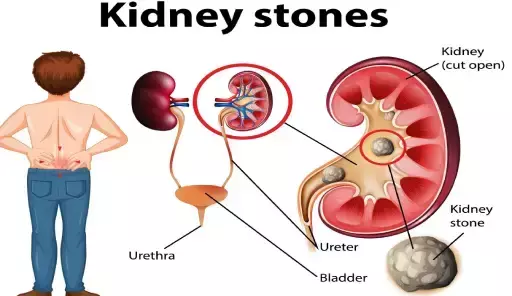Live
- GMR Airports Unveils AI-Powered Digital Twin Platform to Transform Airport Operations
- India poised to become leading maritime player: PM Modi
- Top Causes of Kidney Stones and How to Recognize Silent Symptoms
- India’s renewable energy capacity logs 14.2 pc growth at 213.7 GW
- Winter Session of Odisha Assembly adjourned sine die
- Biden calls Trump's tariff approach 'major mistake'
- After Drama Over Eknath Shinde’s Chief Minister Race, Maharashtra Cabinet Formation Faces New Tensions
- Egyptian FM, Blinken discuss recent developments in Syria
- Iran's supreme leader says Syria's developments result of US-Israeli 'plot'
- Elon Musk to Purchase $100 Million Luxury Mansion Next to Donald Trump's Mar-a-Lago, Report Reveals
Just In
Top Causes of Kidney Stones and How to Recognize Silent Symptoms


Top Causes of Kidney Stones and How to Recognize Silent Symptoms
Learn how kidney stones form, their risk factors, and effective treatments. Expert tips on prevention and management.
Kidney stones often develop silently within the urinary system, presenting no immediate symptoms. Many individuals only recognize their condition when pain becomes severe, underscoring the importance of understanding the disease's subtle warning signs and risk factors.
"Approximately 10 per cent of people will experience kidney stones during their lifetime," stated Kyle Wood, M.D., an associate professor in the University of Alabama at Birmingham (UAB) Department of Urology. Most kidney stones are composed of calcium oxalate. The intense pain typically arises when a stone moves from the kidney into the ureter, the narrow tube connecting the kidney to the bladder.
Kidney stones are solid mineral formations that occur when specific substances in the urine combine. Their type depends on the composition of the urine, making early detection critical to preventing complications.
Key Risk Factors
Kidney stones are linked to several health conditions, including obesity, diabetes, high blood pressure, and heart disease. Dietary choices significantly influence their development. The southeastern United States, including Alabama, sees a particularly high prevalence of kidney stones, earning the region the nickname "Kidney Stone Belt."
Dehydration is a major contributor to stone formation. Dr. Wood highlighted that insufficient fluid intake, high-sodium diets, and excessive protein consumption increase susceptibility. Additionally, diets lacking fruits and vegetables can raise the risk. Genetics also play a role, as individuals with a family history of kidney stones are more likely to develop them.
Comprehensive Care at UAB
UAB’s specialized kidney stone clinic provides personalized care, including metabolic assessments and dietary guidance. Their approach treats kidney stone disease as a chronic condition, with detailed evaluations and tailored treatment plans. Surgical interventions, including minimally invasive techniques, are performed by leading experts in the field.
Preventative Strategies
Hydration is paramount in kidney stone prevention. Dr. Wood recommends consuming about 3 liters (96 ounces) of fluids daily unless restricted by medical conditions. Lowering sodium intake is another critical step—aim for less than 2,000 milligrams of sodium per day by avoiding processed foods and carefully reading labels. A balanced diet rich in fruits, vegetables, and moderate protein also supports kidney health.
Recognizing Silent Symptoms
While kidney stones often cause extreme pain when they obstruct the ureter, their presence in the kidney may go unnoticed. Symptoms such as microscopic blood in the urine or recurrent urinary tract infections might be the first signs of a problem. Pain, when it occurs, is typically sharp and accompanied by nausea or vomiting.
Treatment Options
The treatment approach depends on the size, location, and symptoms caused by the stones. Some stones pass naturally with the aid of medication to manage pain and facilitate the process. Surgical interventions include:
Shockwave Lithotripsy: Energy waves are used to break stones into smaller pieces.
Ureteroscopy and Stone Removal: A small camera is used to locate and extract the stone.
Percutaneous Nephrostolithotomy: A surgical procedure involving a small incision in the back to access and remove larger stones.
Each method has specific advantages, tailored to the patient’s condition.
Long-Term Management
Preventing recurrence is a significant challenge, as those who have had a kidney stone are at higher risk of developing another within five to ten years. Lifestyle changes, including dietary adjustments and medication, are essential for long-term management.
"Prevention plays a pivotal role in managing kidney stone disease," Dr. Wood noted. Adhering to medical advice and maintaining healthy habits can significantly lower the risk of recurrence and improve overall kidney health.
By addressing risk factors and adopting preventive measures, individuals can effectively manage kidney stone disease and minimize future complications.

© 2024 Hyderabad Media House Limited/The Hans India. All rights reserved. Powered by hocalwire.com






